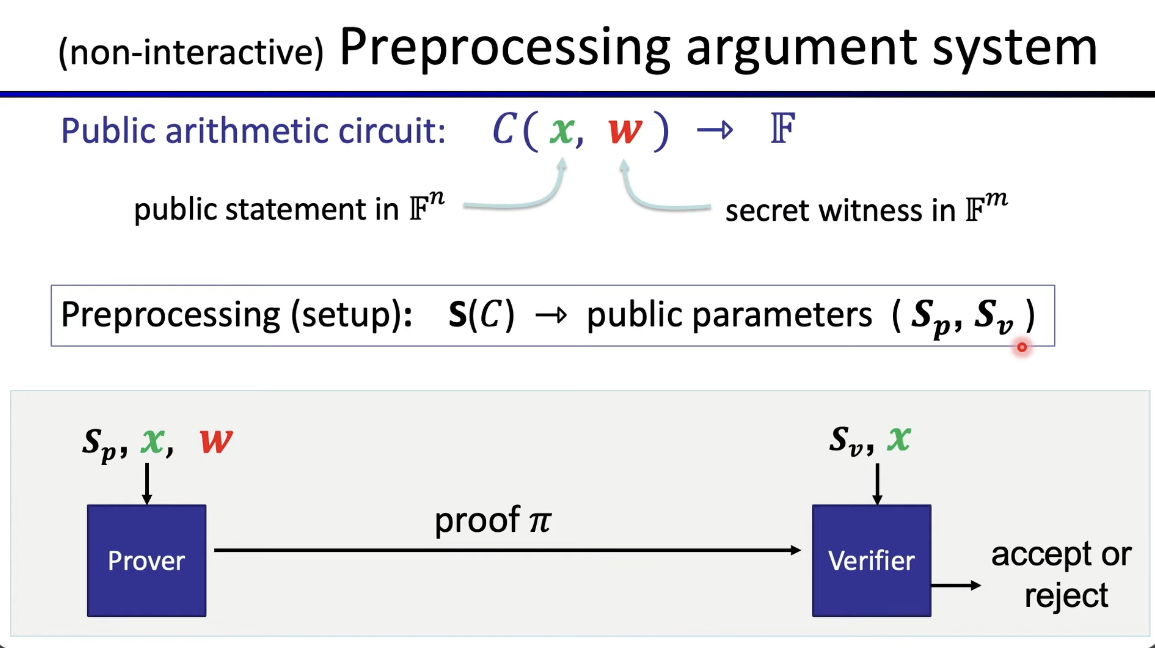Component in ZK-SNARK
Here are the main components of a ZK-SNARK.

Let's explain each component one by one.
- Circuit(C) = Arithmetic circuit
Here is an example of a DAG (Directed Acyclic Graph) that illustrates this arithmetic circuit x1 * (x1 + x2 + 1) * ( x2 + 1)
graph LR
A[x1] --> Plus(+)
B[x2] --> Plus(+)
Constant[1] --> Plus(+)
Constant[1] --> minus(−)
B[x2] --> minus
Plus(+) --> Product(*)
A[x1] --> Product(*)
minus(−) --> Product(*)
Product(*) --> Result(x1 *﹙x1 + x2 + 1﹚ * ﹙x2 − 1﹚)
This circuit has three gates, and it will take inputs (x, w) to produce a proof
-
X = Public statement
- For example, I need to prove what 'a' is in this circuit (arithmetic circuit)
a**3 + a + 5 == 35This equation represents the statement.
- For example, I need to prove what 'a' is in this circuit (arithmetic circuit)
-
W = Secret withness
- The thing you use to prove the statement is called the witness. For example, if you need to find the value of 'a' in the equation
a**3 + a + 5 == 35and the value of 'a' is 3, then '3' is your secret witness.
- The thing you use to prove the statement is called the witness. For example, if you need to find the value of 'a' in the equation
Relation of (X, W) for more example 👉 "W is the credential for account X", "W is secret key for public key X" etc.
-
S(Setup algorithm) = Preprocessing
- Why is setup needed? You can find a detailed explanation of the setup process here 👉 Setup explain ?
- In essence, the setup acts as a pre-processing step that generates common parameters (summarize) for both the prover and verifier.
- The setup process outputs two sets of parameters: (Sp) for the prover and (Sv) for the verifier.
- Why is setup needed? You can find a detailed explanation of the setup process here 👉 Setup explain ?
-
Prover
- The prover's job is to convince the verifier that a specific value of W is valid.
- The prover takes (Sp, X, W) as input.
-
Verifier
- The verifier receives a proof from the prover and determines whether to accept or reject it by returning a value of 0 (reject) or 1 (accept).